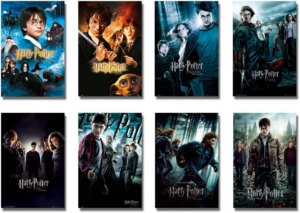What is situational irony? Situational irony is a device in storytelling that is deployed when one’s expectations of what will happen are overshadowed by what actually occurs. It is the literary equivalent of being yanked out from beneath your feet.
Definition of Situational Irony
Situational irony is a broad concept with a seemingly limitless range of uses. At its most basic level, every tale has some element of situational irony, making it an essential part of the storytelling process. Situational irony happens when the polar opposite of what we imagine occurs. It could be as simple as taking an umbrella outside to discover that the sun is blazing.
Different Types of Situational Irony
Situational irony can be divided into four categories.
Cosmic Irony
This feels like divine intervention, similar to the idea of Clarence, the angel assisting George in It’s a Wonderful Life.
Poetic Irony
Consider the final episode of Breaking Bad, when Jesse is finally drug-free, and Walter dies along with his meth factory.
Structural Irony
Consider how the narrator of Arrested Development reacts to the show’s events. That is what structural irony is all about.
Arrested Development’s Narrator
Historical Irony
Consider the movie The Social Network, in which a person who created a friend-finding software finds himself alone at the end.
The Social Network – Last Scene
Situational Irony in Literature
Situational irony has played a significant part in literature and theater for hundreds of years. Here are a few literary examples of situational irony:
American Psycho
Patrick Bateman confesses to a string of killings in American Psycho but is laughed off. We anticipate him to be punished for his sins, yet he is not. This is an example of situational irony.
American Psycho – Confession Scene
Macbeth
The titular character in Macbeth murders the king as a means to a goal. However, Macbeth soon discovers that he must continue to kill to preserve his kingdom. As an example of situational irony, the killings were supposed to end Macbeth’s murders, but they only worsened.
The Story of an Hour
Louise receives word that her spouse has died. Despite the morbid circumstances and the fact that Luise has no grudge against her husband, she is overcome with joy. When her husband comes back alive, she has a heart attack and dies. As it is the polar opposite of what we would anticipate from a grieving widow, this is an example of situational irony.
Using Situational Irony for Suspense
Let us look at a situational irony example from one of David Fincher’s best films, Zodiac. In this case, we anticipate something nefarious. When it does not, though, our expectations are thrown off. We expect Vaughn to assassinate Graysmith here for two reasons: one, Vaughn almost confirms his involvement in the Zodiac killings in Graysmith’s eyes; and two, we are assaulted with horror tropes. So, we are surprised when Vaughn does not kill Graysmith. We regard the occasion as situational irony because of the shock or failure to meet expectations. Check to watch the video below if you have never seen the scene before. It is one of the best suspense scenes in cinema history.
Situational Irony for Suspense in Zodiac
Using Situational Irony for Humor
If you have ever watched the game show The Price is Right, you will know that Bob Barker, the long-time host, has one of the sweetest and kindest personalities.
As a result, we anticipated him to act like that character when he appeared in Adam Sandler’s Happy Gilmore. Instead, we got Barker flinging punches and profanities, which was unexpected and funny.
Character expectations are shattered through situational irony. For instance, if we believe a character is foolish, but they turn out to be intelligent, we might claim situational irony has been used. As a result, if a character reinforces archetypal features, we can conclude that they are not well-rounded – and that no situational irony has been found.
Situational Irony for Humor in Happy Gilmore
In This Is Spinal Tap, a prop arrives on a set smaller than expected, perhaps my favorite example of situational irony. Check out Spinal Tap’s Stonehenge sequence below if you have not already.
The members of Spinal Tap are surprised to discover that their prop is much smaller than perceived – but that is what happens when you do not know the difference between feet and inches.
Situational Irony for Humor in Spinal
Using Situational Irony for Dramatic Effect
The Joker abducts District Attorney Harvey Dent and Bruce Wayne’s ex-girlfriend Rachel in The Dark Knight. We believe The Joker is forcing Batman to choose between Rachel and Dent when he discloses their whereabouts.
The Joker does, but not in the way we assume; he alters their addresses, causing Batman to save Harvey rather than Rachel. Indeed, malicious use of situational irony.
Using Cosmic Irony
Cosmic irony is a sort of situational irony distinguished by the presence of a supernatural element. Again, we are still in a position where reality and anticipation are at odds, but there is a twist this time: a “higher power” is involved.
God, the Universe, Fate, or even aliens could be this more significant force. Cosmic irony is also known as “fate irony,” which may offer you a better understanding of how it all works.
The title character in Monty Python’s The Life of Brian falls off a towering building and is rescued by an alien ship. The Pythons mostly mocked cosmic irony in this episode. Many cases of cosmic irony deteriorate into deus ex machina or a hopeless situation remedied artificially – but this example succeeds because it employs satire. There is much more to learn about cosmic irony, including references from films and television shows.
Using Poetic Irony
Another sort of situational irony is poetic irony, which may be the most satisfying for the listener. When a crime is unexpectedly resolved, poetic irony frequently occurs due to a twist of fate. The theft of a horse racetrack is meticulously planned and performed in The Killing. In the end, karma comes for Johnny Clay just as he is about to flee. While waiting for the jet, a dog runs onto the tarmac, and the luggage cart driver swerves. When Johnny’s suitcase falls, $2 million in cash is thrown.
Using Structural Irony
The structural irony is a subtype of situational irony and depending on whether it is utilized in comedy or drama, it can have two very different impacts. First, when the viewpoint of an unreliable narrator or naive protagonist differs from the reality of the situation, structural irony occurs. The untrustworthy narrator may be simply lying to the audience, or they may have convinced themselves of a false truth. In either case, structural irony emerges when the entire story is organized around this ignorance or dishonesty. The narrator realizes he is Tyler Durden in this scenario. An untrustworthy narrator has distorted everything up to this point. As a result, we can call Fight Club a structural irony example. You can see the sequence from the movie below if you wish to review it. Consider adopting an unreliable narrator like Tyler Durden from Fight Club if you want to use structural irony in your script.
Using Historical Irony
The final category of situational irony is historical irony. As the name suggests, it has more to do with history than fiction, yet it can still be employed in your tale for profound reasons. For example, Mark Zuckerberg finds himself alone at the end of The Social Network script, reaching out to someone he once had a relationship with — perhaps the only person he ever had a chance of connecting with. This sequence is beautifully performed in terms of metaphor and historical irony. In addition, historical irony is an effective tool for tying up a film’s major and minor themes.
Mark Zuckerberg Finds Himself Above
Using Situational Irony in a Screenplay
So, now that we have defined situational irony, how might it benefit a writer?
The most important thing to remember is that true irony is rare in real life, and when it does occur, it is usually performed for laughs. In scripts, situational irony is typically used for dramatic purposes.
A story with situational irony infuses it with a level of “divine commentary,” as if the world itself is conspiring to highlight the story’s plot and ideas. This gives the impression of a well-planned and finished job.
Situational Irony in Romeo and Juliet
Situational irony is found in William Shakespeare’s tragedy, Romeo and Juliet. In Act 1, Romeo is head over heels in love with Rosaline and only wants to see her at a ball. However, Romeo sees Juliet at this ball and falls in love with her instead. Surprisingly, he could abandon his love for Rosaline so swiftly, considering he states there is no one like her at first. Then three scenes later, he declares that he has not moved till the moment he meets Juliet and that he has never seen pure beauty before her.
Examples of Situational Irony
1. Monsters

The film’s entire plot revolves around creatures scared of small children. The audience always cracks up when the phony small boy appears in bed, and the monster freaks out.
2. Frozen

There are several examples, but the scene with Olaf enjoying the summer is the best. The song and dance routine he performs is rather amusing.
There is a scene where they are nearing the castle, and Olaf says that he knows Elsa is gentle and will not hurt anyone. But, at the same time, he impales himself on one of the sharp icicles surrounding the castle.
3. Finding Nemo

When Mr. Ray and Marlin talk about who can keep an eye on Nemo to the best of not get into trouble, Nemo wanders off and gets himself into trouble during this dispute.
4. Aladdin

Despite differences in social backgrounds, both characters grumble about being confined in the same scene. Jasmine feels confined because she lives in a palace and has no options; Aladdin feels trapped because he is poor and has no prospects.
ALADDIN (1992) Scene: “Do you trust me?”/Aladdin’s Captured.
5. The Incredibles

Mr. Incredible is sued in the first scene for injuring someone while saving their life. We also see the beginnings of the future irony, with Buddy, his former number-one fan, now his arch-enemy.
6. The Lorax

Everyone is glad to have only technology and no true nature in the initial scene. A child swims and becomes green but remains cheerful; a man drives a massive vehicle, and a tree needs dozens of batteries to function. The most powerful man in the city is also the tiniest in the same setting.
Dr. Seuss’ the Lorax (2012) – Thneedville Scene (1/10) | Movieclips
7. Adaptation

When the protagonist attends a screenwriting workshop, he is taught that employing voiceovers is terrible. As a result, there is a lot of narration in this movie.
“Adaptation.” (2002) — Screenplay Seminar Scene
8. Terminator 2: Judgment Day

Sarah Connor believes the T-800 is here to kill her, but it is actually here to help her avoid danger.
Terminator 2: Hospital Escape l Sarah Connor Meets T800 l 4K Remastered 3D
9. Avengers: Infinity War

The Hulk himself pilots the Hulkbuster armor.
Hulkbuster Battle In Wakanda Avengers Infinity War 720 X 1280
Conclusion
Like other dramatic approaches, situational irony is another device in the toolbox of the intrepid screenwriter. When employed correctly and wisely, situational irony can convey a moral message and elicit a laugh from the audience.













